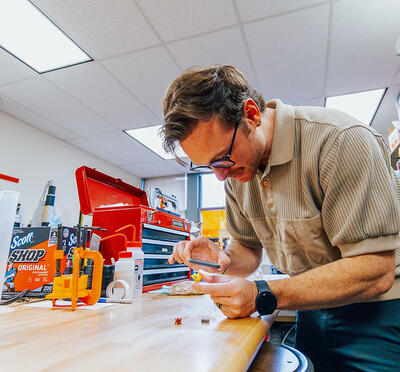Madelyn Sadler, an undergraduate student at Oregon State University, has been working over the past two years on a project sponsored by the Office of Naval Research to develop an innovative human interface for underwater robots.
Majoring in computer science with a focus on artificial intelligence, Sadler says she is primarily interested in the cognitive elements of the field.
“I love the possibilities of computer science,” said Sadler, a 2025 Goldwater Scholarship nominee. “It’s exciting how applicable it is to many other fields of research.”
During her first year at Oregon State, Sadler became involved with the university’s URSA Engage program, which matches undergraduates with faculty mentors on research projects. Sadler connected with Cristina Wilson, assistant professor (senior research) in robotics and director of the Research in Applied Decisions Lab.
“I feel grateful to be a part of this exceptional lab with so many incredibly talented and intelligent people,” Sadler said. “This opportunity has been more than I expected as an undergraduate.”
The underwater robots she’s been working with are outfitted with manipulators to enable a variety of activities ― such as scientific sampling, infrastructure maintenance, or collecting unexploded ordnance. Operators typically monitor these tasks over video, but turbid waters can hamper data collection. The ONR project is exploring whether novice supervisors can interpret tactile feedback from sensors on the manipulators.
Sadler co-presented a poster covering this research at the 2024 Northwest Robotics Symposium, held in Corvallis. A related paper was accepted as a late breaking report at the IEEE International Conference on Robot and Human Interactive Communication. More recently, she has been working with researchers at Temple University to determine at what point geologists feel that their data is too variable to publish or record.
This summer, Sadler will intern at Discover Financial, focusing on data science. She’ll consider options for graduate study after she graduates in 2026. She hopes eventually to work in biotechnology or health care, with an emphasis on AI and robotics.
“Anything at the intersection of robotics and human health, like biotechnology, would be really interesting,” she said. “I find the developments in smart prosthetics that use AI systems fascinating.”




